Axolotls (Ambystoma mexicanum) are sometimes referred to as walking fish. Yet they are really a species of amphibian.
They are neotenic salamanders, which means they’re ‘stuck’ in their aquatic larval stage. They don’t metamorphosize, lose their gills, or move onto land.
The native axolotl habitat is Central Mexico. In the wild they live in the lakes surrounding what is now Mexico City. The name axolotl is an indigenous Nahuatl word for these unusual salamanders. The species used to be common but now they are endangered in the wild.
As Mexico City has grown their habitat has shrunk to a fraction of what it once was. Water pollution is a constant concern. Fortunately, they thrive in captivity and may one day be reintroduced to the wild through conservation programs.
Axolotl care is a little different than that of aquarium fish. An axolotl tank has specific temperature, decoration, and tank mate requirements. When done right the average axolotl lifespan is 10 to 15 years.
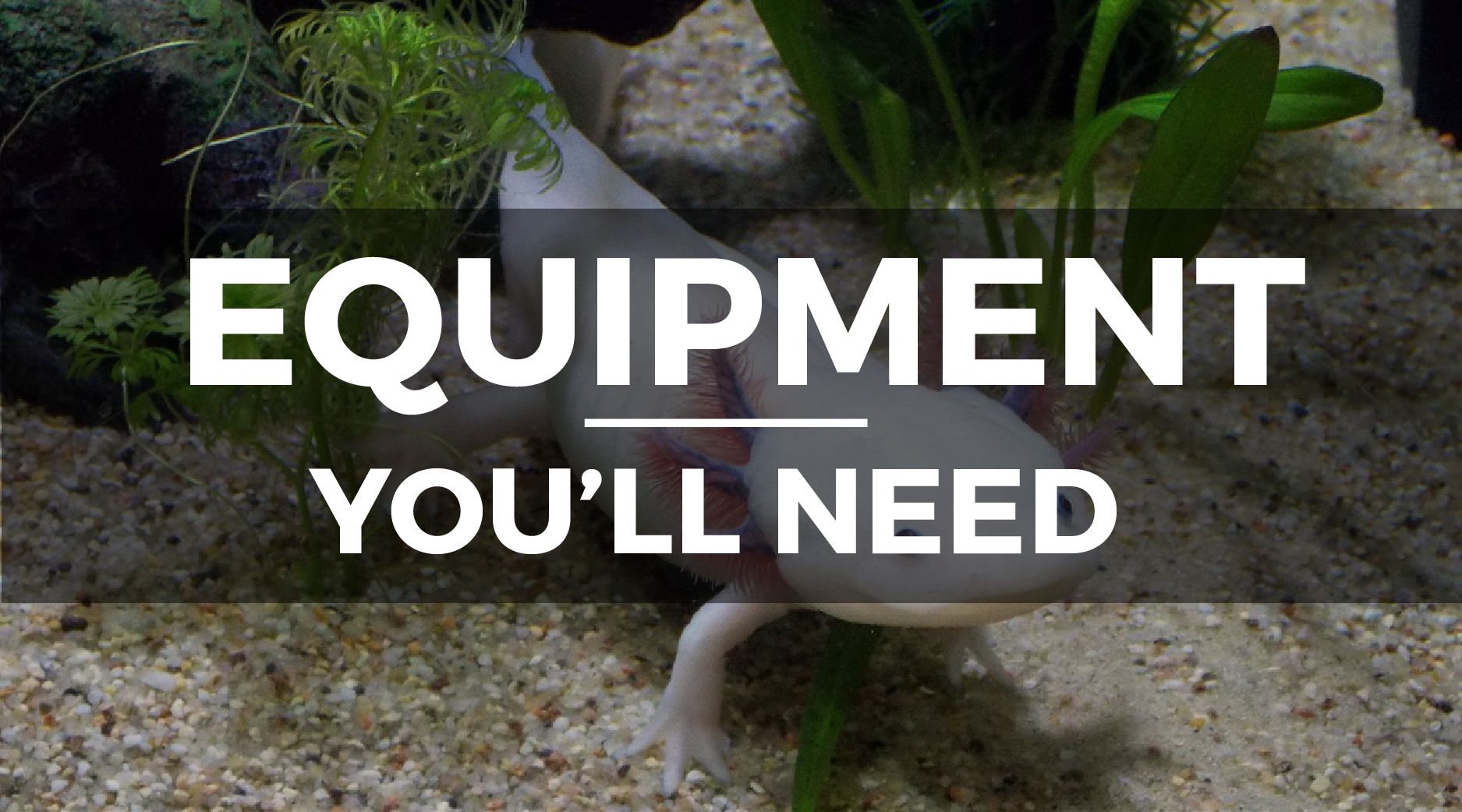
Caring for an Axolotl – Necessary Equipment:
Here is everything you will need to set up a Axolotl aquarium:
Axolotl Tank Size
Choosing the right tank type is an important part of getting started with keeping any aquatic animal and it’s no different for Axolotls.
Contrary to what many sources will tell you, a 10-gallon aquarium is not enough to sustain an Axolotl in the long run. It might be an option for a single juvenile specimen if you’re planning on upgrading later, but since an adult size of 10 inches is not uncommon you’re better off just going for a larger set-up right away.
A 20-gallon aquarium is best for a single axolotl fish tank. A long tank is better than a tall one since these are bottom dwellers that have no use for vertical space. If you want to keep more than one Axolotl be sure to provide of extra room. 10 extra gallons for every additional salamander is a good idea.
Don’t crowd them, though. Axolotls aren’t social and have poor eyesight. When hungry, they may snap at the gills or limbs of other axolotls.
Filters for Axolotl Tanks
Every aquarium needs a filter, including axolotl tanks. Choose one for your Axolotl set-up that doesn’t create strong water flow. These salamanders aren’t fast swimmers and don’t enjoy overpowering currents.
You could still use a filter with a strong outflow if you modify it somewhat. I tie a piece of sponge in front of the outflow to break up the flow and slow down the current.
Axolotl keepers often use sponge filters, as they process water without creating too much flow. You’ll need an air pump to run this filter type. Be sure to get a high-quality and powerful one to ensure proper filtration. If your tank is going to be in a living area check the noise level beforehand, as some air pumps are loud.
Do Axolotls Need a Heater?
Axolotls are a coldwater species of amphibian and they are intolerant of high temperatures. So you’re not going to need a heater at all. The water temperature should remain at 60-68°F.
Room temperature to a little cooler than room temperature is best. If you live in a warm part of the world or have hot summers then a chiller is a good investment.
How to Cool Axolotl Tank
One way to keep an axolotl tank cool is to use an airstone. As air is forced into the water it facilitates heat exchange by increasing the effective surface area of the water relative to the air.
An airstone also keeps the dissolved oxygen levels in your tank high. When water warms up the amount of oxygen it holds decreases. So the more aeration the better for your axolotl.
Setting up a fan to blow water directly across the surface of your tank can also help keep an axolotl cool. Last, try using fluorescent or LED lighting setups rather than incandescent lights, which emit a lot of heat.
Water Test Kit for an Axolotl Tank
A water test kit is a crucial part of axolotl care. Most toxic compounds are invisible and have no smell. A liquid (not strip) test kit that at least contains tests for ammonia/ammonium (NH3/NH4), nitrite (NO2), nitrate (NO3) and pH allows you to monitor your water quality and make sure it’s suitable for your Axolotl(s).
I highly recommend the API Freshwater Master Test Kit since it includes all of the tests you need.
Axolotl Tank Lighting
Take some time to select the right light for your Axolotl tank. Many aquarists are used to using strong lighting for optimal plant growth, but this is not the way to go with this species.
Axolotls don’t appreciate bright light at all and powerful lamps can stress them out. Instead, find something that allows you to see your Axies without scaring them into hiding all day.
Strong lighting also tends to put out a lot of heat, especially incandescent light fixtures. Axolotls prefer cold water conditions so stick to fluorescent and LED lights that don’t emit much infrared radiation.
Setting up Your Axolotl Tank
There is more to creating an axolotl ecosystem than putting the above equipment together. Cycling, substrate, and tank mates are just as important.
Cycling an Axolotl Aquarium
Choose a room in your home that stays cool year-round to avoid overheating aquatic axolotls during the summer.
Fill up your aquarium and turn on equipment like the filter and heater. If you want, you can also put all decorations in their respective places. After this it’s time to start the cycling process.
Cycling your aquarium means you give it time to accumulate beneficial bacteria in the filter and substrate. These bacteria remove ammonia and other nitrogenous waste products. They use these toxic agents as food, converting them to less toxic forms for you to remove via water changes. Without beneficial bacteria, ammonia would accumulate until it poisons your axolotls.
If you want to cycle your tank faster you can kickstart the process by adding ammonia. This is called fishless cycling, so you don’t want to do this while your axolotl is living in the tank. Instead, we add small amounts of ammonia and allow the bacteria to multiply until there are enough to consume the waste your axolotl creates.
Another way to cycle the tank is by using bottled nitrifying bacteria. That’s the fastest way to cycle an axolotl aquarium.
Axolotl Water Parameters
Like most aquarium inhabitants Axolotls do best in a certain range of water values and temperature. The latter is most important: unlike tropical fish, Axies are a coldwater species that won’t do well in warm water.
Axolotl Water Temperature
Your axolotyl tank water should stay betweel 60-68 °F. Lower temperatures are not a problem, as the salamander’s metabolism will slow down. They will eat less and grow slower but won’t be stressed by the cold.
Heat is more dangerous and you should avoid temperatures over 75 °F. Overheating causes extreme stress in Axolotls. They will also eat more and poop more, fouling their water faster. If the filter can’t keep up the tank will start to smell as well.
Ammonia, Nitrite and Nitrate for Axolotls
These three pollutants are related to your cycle, which we discussed above. As you hopefully know by now, ammonia and nitrite should always be at zero as they are both deadly.
Nitrate is acceptable at low levels, but don’t go beyond 15-20 parts per million. If this does happen, perform a water change to reduce the nitrate level.
What pH do Axolotls Prefer?
The acidity or alkalinity of your water should be measured using your pH test. Axolotls can handle a relatively wide pH range: between 6.5 and 8 is acceptable, with 7.0 to 7.5 being ideal.
Axolotl Water Hardness
Axolotls like hard water and your general hardness should be at least 100ppm, with a maximum of around 200ppm. Most tap water in developed countries is hard and alkaline so it won’t need any adjustment besides removing the chlorine.
Whenever you perform a water change make sure that you use a tap water dechlorinator to neutralize chlorine and chloramine. Municipal water companies use these chemicals to make water safe to drink for us. The chemical additives are toxic to aquatic life, however, including Axolotls.
Axolotl Substrate
Since Axolotls are bottom dwellers it’s a good idea to pay some attention to your substrate type. Most Axie enthusiasts agree that sand is the way to go for these amphibians. Carib Sea Super Natural Moonlight Sand works well.
Some also keep Axolotls in bare-bottom set-ups for ease of maintenance, but there is some discussion on whether the lack of foothold will cause some stress. If you want to go the bare-bottom route, consider using slate or tile on the bottom of the tank to provide your Axolotl(s) with some extra grip.
Gravel, stones or marbles are not recommended as a substrate for axolotls. These salamanders see almost anything as food and are clumsy during feeding time. Sometimes when they inhale their food they get a few grains of the substrate. Instead of spitting it out they may end up swallowing some.
Swallowing some substrate is no problem if they’re kept on sand because the Axolotl will poop out any sand it swallows. But any axolotl substrate with coarse grains could lead to big trouble. When ingested, gravel may cause compaction and even death if a veterinarian does not perform surgery. So I recommend setting up a sand or a bare bottomed axolotl tank.
Axolotl Tank Decorations
Axolotls appreciate hiding places and prefer some decorations in the tank.
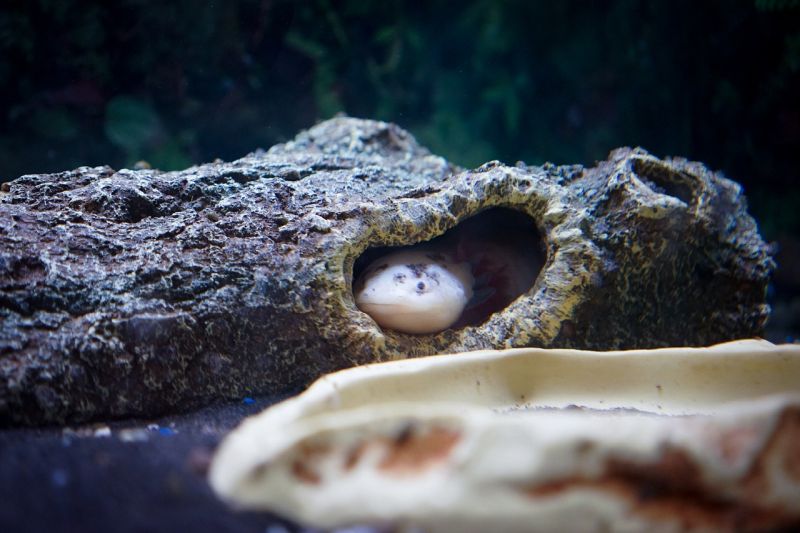
Plants in an Axolotl Tank
Live plants are not only beautiful; they also use ammonia and other pollutants as fertilizer. When choosing plants for your Axolotl tank, go for sturdy species. Axies are large, chunky salamanders and will uproot and disturb plants as they move about.
It is also difficult to find species that will withstand the low temperature that Axolotls prefer
Marimo moss balls are one of the best plants for Axolotl tanks. They also prefer cold water conditions, they don’t require a lot of light, and are easy to keep. Moss balls also look like exotic green pillows, offering baby axolotls a place to perch.
Keep up with your water changes and tank maintenance as well because Marimo moss balls are sensitive to high levels of pollutants. Since they grow so slowly they can get smothered in algae.
Here are some other plants that might work well:
Floating plants are also helpful in creating subdued lighting that helps the shy Axolotl feel more comfortable. They also use ammonia, nitrite, and nitrate as fertilizer, helping to improve the water quality in the tank. An Axolotl also won’t be able to disturb them by uprooting them like they do to most substrate rooted plants.
Driftwood in an Axolotl Tank
A few well-placed pieces of driftwood are ideal for a natural axolotl setup. Driftwood also doubles as secure hiding places. Chunky driftwood without any sharp edges works best; avoid anything that the salamander(s) might get stuck in or cut by.
Cholla wood and Mopani Wood both look nice and work well.
Rocks for Your Axolotl
Complete your hardscape with anything from river rocks to dragon stone. Some types of aquarium stone contain calcium, carbonate, and other minerals that will raise the pH when used. Since axolotls prefer hard water, it’s not an issue if you use limestone, marble, sandstone, and other mineral-rich rocks.
Axolotl Hiding Places
There are many types of natural-looking hides on the market that you can use to make sure your Axolotl has a place to retreat to during the day. Some of the best include ceramic pipes, cichlid rocks, and Pleco breeding caves.
Axolotl Tank Mates
Should you keep your Axolotl alone or are there certain tank mates that might work? It might be tempting to stock your tank with multiple species. But its not a good idea to add axolotl tank mates to your setup.
There are two reasons these salamanders should be kept in a single-species set-up:
- Danger to the Axolotl – Axies are a vulnerable animal. Their delicate external gills are easy to damage. They are soft, feathery, and red. Tempting targets that even peaceful fish species may nibble at. Treating open wounds in an axolotl is difficult. They have amazing powers of regeneration and will regrow any damage to their gills. But an open wound that gets infected could become life-threatening.
- Danger to the Tank Mate – Axolotls are opportunistic carnivores that will try to eat anything that gets too close. They are a danger to small tank mates like schooling fish. They might seem slow when they’re lounging around but you’ll be surprised to see how fast they snap up unsuspecting prey. Some aquarists do keep their Axies with small species like minnows or guppies. That’s okay as long as you accept that these “tankmates” will get eaten sooner or later.
Keeping Multiple Axolotls Together
Most non-axolotl tank mates are not recommended. But you might be wondering whether it’s possible to keep multiple Axolotls together.
The answer here is yes, but I recommend caution here.
First you should keep tank size in mind if you want to keep multiple Axolotls. These salamanders will grow large and each individual needs its own space. So add at least 10 extra gallons for each additional Axie.
Too little space can result in squabbles where limbs or gill filaments lost and the weaker specimen ends up dying. This also applies when keeping multiple younger Axolotls or Axolotls of different sizes. Their aim is not good when feeding and one axolotl may bite the foot right off its sibling.
Last, make sure every Axie has at least one hiding place for itself. And keep an eye on your water quality since these salamanders create a lot of waste.
What Do Axolotls Eat?
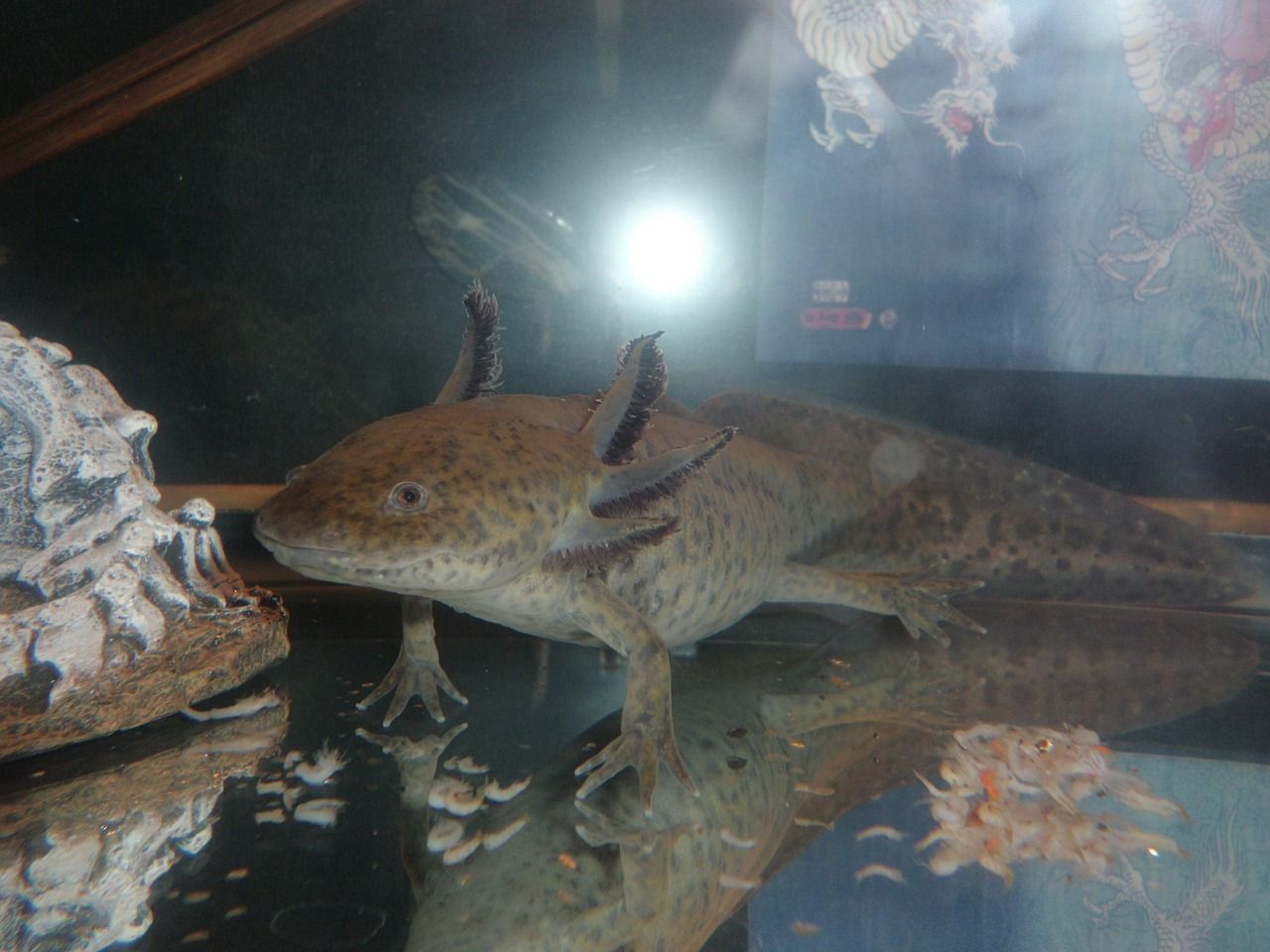
In the wild, Axolotls are predatory and will eat anything that comes too close. Typical prey includes aquatic insects and worms, small fish, any land insect that has fallen into the water, other small amphibians and even their own eggs or smaller Axolotls. Their cosmopolitan diet does make them easy to feed, however.
What to Avoid Feeding an Axolotl
Although they are carnivorous, axolotl salamanders aren’t apex predators. They are somewhat clumsy and could be hurt by more aggressive prey. Their stomachs will handle a lot but the hard exoskeletons of crayfish and other crunchy prey may cause impaction.
Axolotl guides and books used to regard warm-blooded animal meat like beefheart and liver as the best axolotl food. But we don’t recommend using these any more. Land animals are too high in fat and foul water quality like nothing else.
Also avoid offering feeder goldfish since they don’t contain the right nutrients for your Axies to thrive.
Here is a quick guide of foods you should avoid:
- Anything with a hard exoskeleton
- Beef heart and liver
- Goldfish
- Any wild caught minnows (or similar fish)
What Should I Feed an Axolotl?
There are high quality carnivore pellet types out there that work well for Axolotls, so if you can get yours to eat these they make a great staple option. That’s a the problem, though: not all Axies are fond of pellets.
They are motion sensitive predators. Since pellets don’t move an axolotl may not realize they are food. Mixing pellets in with their regular living diet will help accustom an axolotl to eating them.
Most keepers agree that worms are one of the best axolotl foods out there. Many species will work, including frozen worms like bloodworms, home-cultured species like blackworms, and regular earthworm. All of these are high in nutrient content You can boost that even further by gut loaded beforehand using vegetables or pellet food.
Worms also don’t have a hard exoskeleton or the power to hurt your Axolotl. Chop up larger worms to prevent issues and they make an ideal food for axolotl salamanders.
Besides pellets and worms, you could try feeding live guppies or minnows (home-bred to prevent disease and parasites), small insects, and strips of raw cod and other fish.
Remove Any Uneaten Axolotl Food
Axolotls are very messy eaters that will miss food that’s right in front of them. They will often ignore food if it’s not moving and will spread pieces of food all over the aquarium when they chew.
Remove any uneaten food within a few hours to avoid water quality issues. Leaving uneaten food in the tank will cause it to smell as bacteria take action. Ammonia and nitrite levels will rise fast, which are dangerous to all aquatic life.
Axolotl Care: Troubleshooting Problems
Problems can arise in any area of the aquarium hobby and things are no different with Axolotls.
My Axolotl is Overheating
A heat stressed Axolotl will show white patches of mucus around the head. It might vomit food back up or stop eating altogether.
Once an Axolotl has overheated all you can do is bring the temperature back to the acceptable range, wait and hope any damage is not permanent. Consider whether the room you want to place your Axie tank in gets hot during summer and choose a cooler room if necessary.
Use chilling fans and air stones during the hotter months. Or even consider investing in an aquarium chilling system or air conditioning to bring the room temperature down.
In extreme cases you can add ice cubes or frozen water bottles to the tank to help get through a strong heat wave. Make sure you have a thermometer to keep the tank from getting too chilly. Sudden cold shock is as dangerous as extreme heat.
Axolotl Aggression and Lost Limbs
Axolotls are predatory and not picky about their next meal. A fellow Axie’s leg or tail looks much like a tasty worm. In cases of overcrowding or keeping juveniles together these salamanders might end up taking a bite out of each other. Injuries are not often fatal but avoiding these situations is the best practice.
Axolotls can regenerate body parts like legs, tail and gills. Which means that in most cases a wounded specimen will be fine. Its new limbs may not look as good as the old ones, but it’ll swim and live as well as an undamaged axolotl.
In cases of lost or damaged limbs that don’t seem grave, your best bet is to separate the Axolotl in question to a separate tank. Maintain very high water quality in the quarantine tank until the wound has healed.
If your Axolotl has been damaged by one of its tank mates, you may have to take it to a vet. Not all vets will see aquatic animals. So be sure to find one and have their contact info ready before buying your Axie.
If your vet can’t see the wounded Axolotl right away, place it in a tub in the fridge to slow down its metabolism until it’s time for its appointment.
Compaction in an Axolotl
Axolotls are prone to eating small rocks and gravel, which may cause compaction if they get lodged in the digestive tract. Compaction may also occur if insects or crustaceans with hard exoskeletons are fed. Sometimes the Axolotl’s digestive system is unable to deal with a heavy meal of crunchy animals.
What should you do in case of compaction?
Your best bet is to place the affected Axolotl in the fridge. That slows down its metabolism, which results in its body attempting to get rid of any leftover foods as fast as possible. Doing so should help it clear out its digestive tract.
You should start seeing pieces of poop in the container within a few days. If this is not the case you’ll have to make a vet appointment to see what should be done.
Can Axolotls Go On Land?
Axolotls are neotenic (which means they don’t metamorphose in most cases), the switch is possible.
The Axolotl in question will start to lose its gills and fins. Its eyes bulge and develop eyelids and it changes from being aquatic to land-dwelling and air breathing. Its care requirements become similar to that of the terrestrial tiger salamander, a related salamander species that’s popular with amphibian enthusiasts.
So what’s the deal with metamorphosed Axolotls? If it’s not supposed to happen, then why do we sometimes see it?
In rare cases, an Axolotl will metamorphose naturally. Usually, though, the process is the result of hormonal treatment. Axolotls didn’t metamorphose because they lack iodine in their natural habitat. Iodine enriched foods or injections will cause them to transform.
Even though they remain in their “larval”state, axolotls have a complete life cycle. They become aquatic, sexually mature adults. They evolved a strategy to reproduce without the need for iodine.
That’s why metamorphosing your axolotl is not something you should do. Individuals that metamorphose after reaching adulthood are short-lived. And the ‘forcing process’ is sometimes fatal.
Axolotl Tank Maintenance
The most important tasks are substrate vacuuming (after feedings and during water changes), water changes (weekly depending on your water test results) and filter cleaning (bi-weekly). Prune any fast growing plants that are axolotl-proof and do algae scrubbing where necessary.
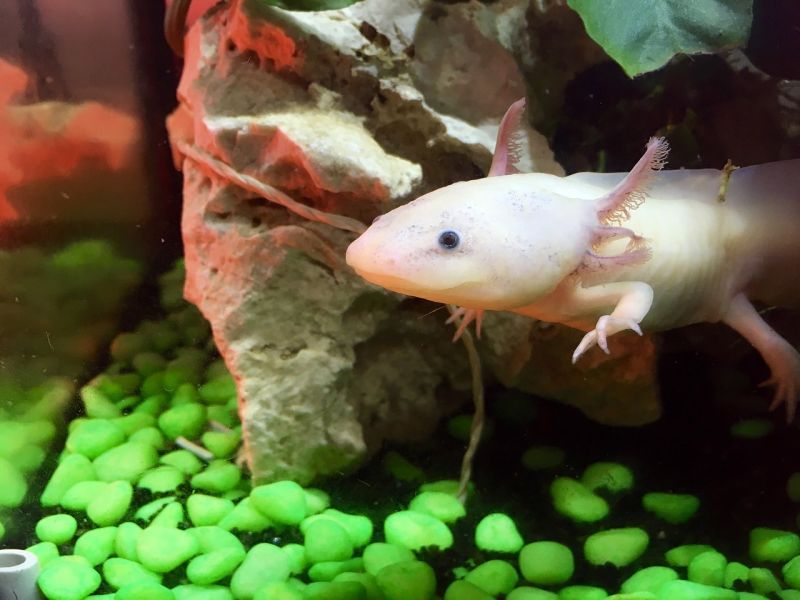
Conclusion
An axolotl tank is one of the easiest amphibian setups you could have. An efficient filter, meaty prey, and cold temperatures are the most important requirements. Avoid keeping axolotl tank mates since these animals are semi-blind predators with big appetites. Your axolotl should live for 10-15 years in these conditions.
More Frequently Asked Questions about Axolotls
How Long Do Axolotls Live?
So long as they are kept cool, clean, and well fed, a pet Axolotl will live between 10 and 15 years. Some are reported to reach up to 20 years old.
How Much Do Axolotls Cost?
A pet Axolotl is one of the more affordable “herps” (reptiles and amphibians). Expect to pay between $20 to $50 for a good quality Axolotl, depending on the color and size of the specimen. Black axolotls tend to cost more than albino, leucistic, or normal morph axies.
What is an Axolotl?
The Axolotl is a salamander from Central Mexico. It is found in a small region of the country but has become popular worldwide because they are a model organism for scientists and easy to care for and breed. As neotenous salamanders, axolotls retain their larval form with gills for their entire adult lives. They don’t transform into a land-dwelling animal like other amphibians.
How to Breed Axolotls
The best way to breed Axolotls is to simulate their natural environment as close as possible. That means raising a male and female that are sexually mature (12-18 months old) and compatible with each other. You also have to providing them with live or fake plants, dim lighting, and cold conditions. A selection of high-quality live and fresh foods will condition them to develop eggs and spawn.
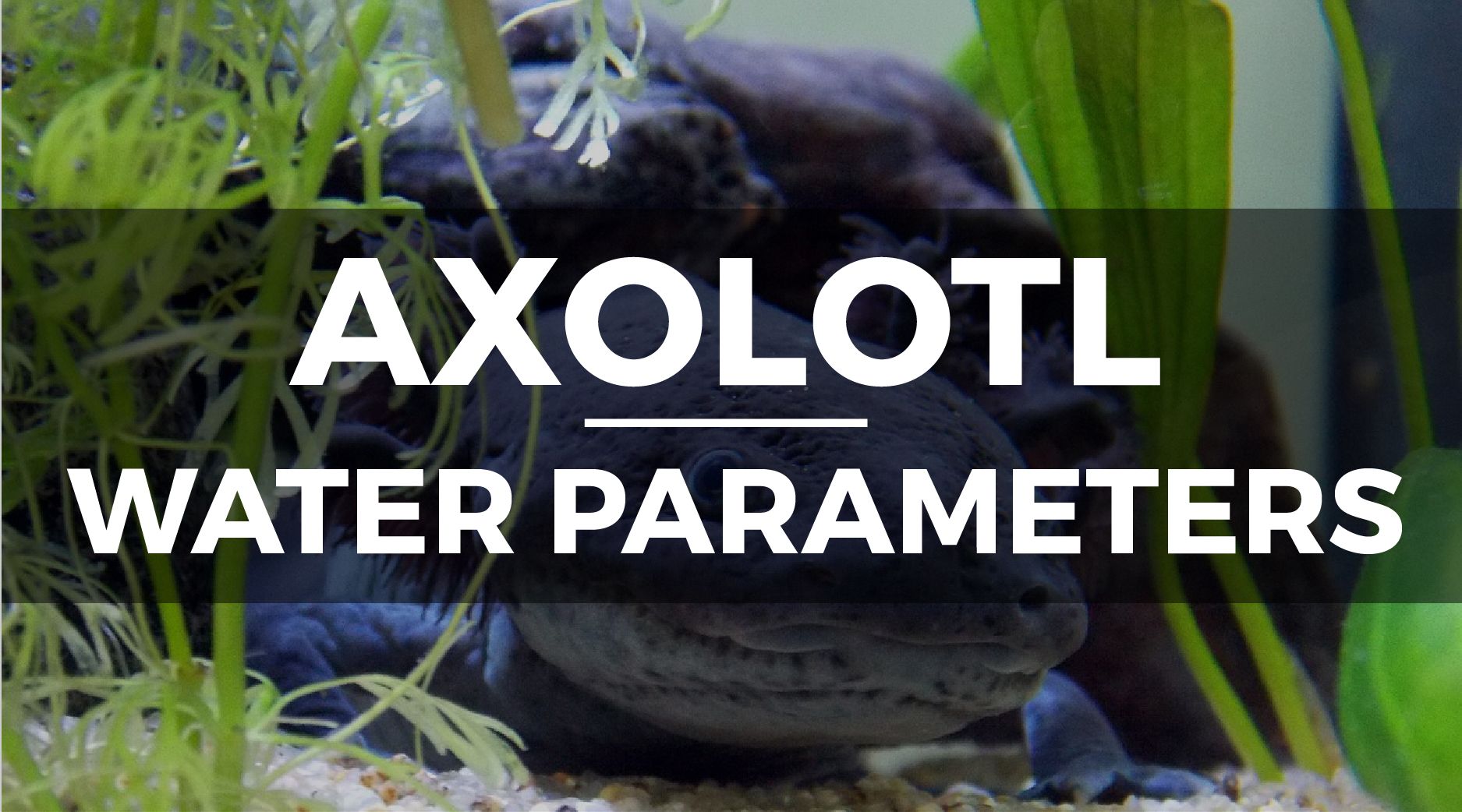
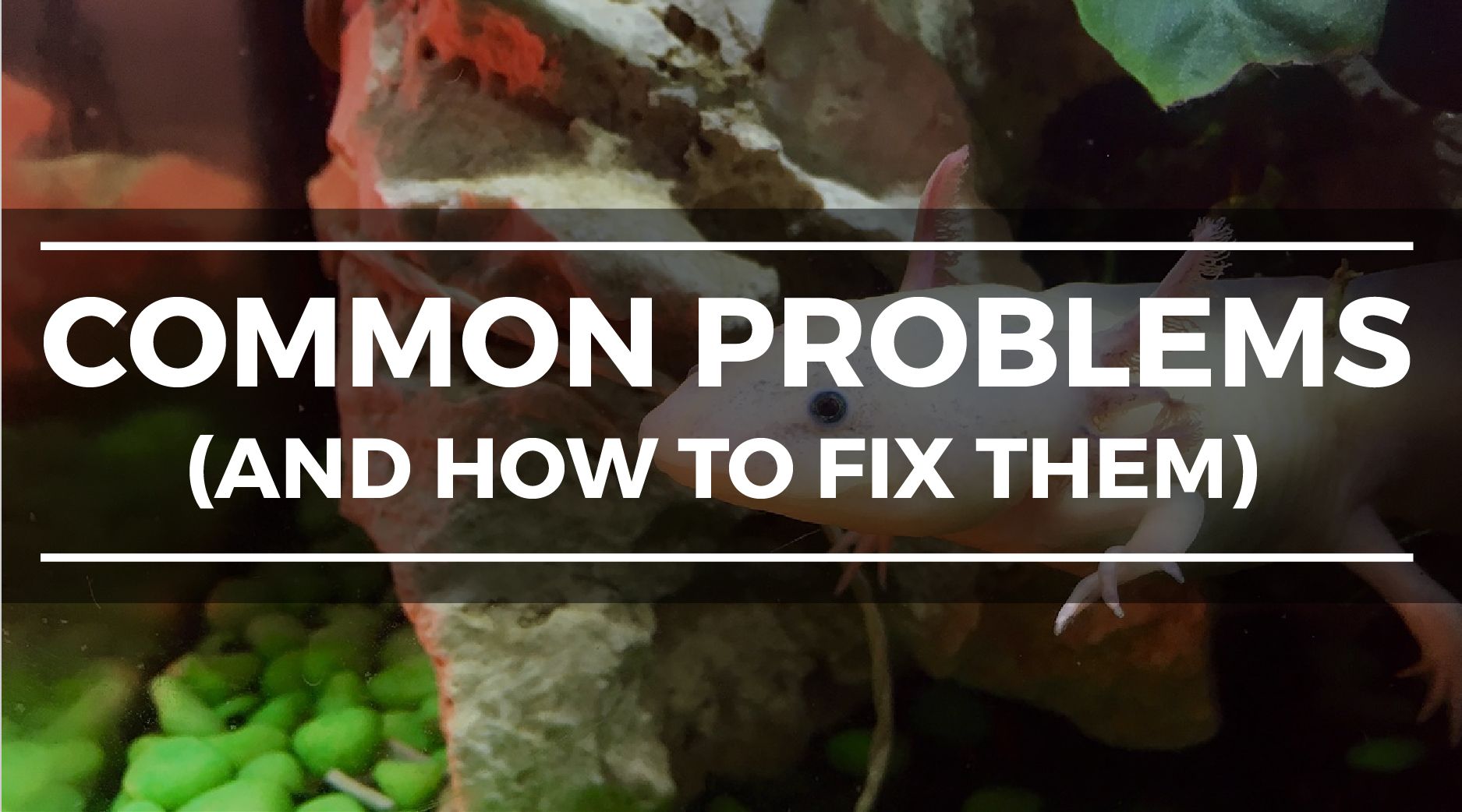


Very useful information we will certainly be using this info to set up our tank thank you very much
Axolotls take a bit of work, but boy, are they worth it.
Wow!! This is amazing, I can’t wait to get me an axolotl tomorrow!!
THANK YOU!!!